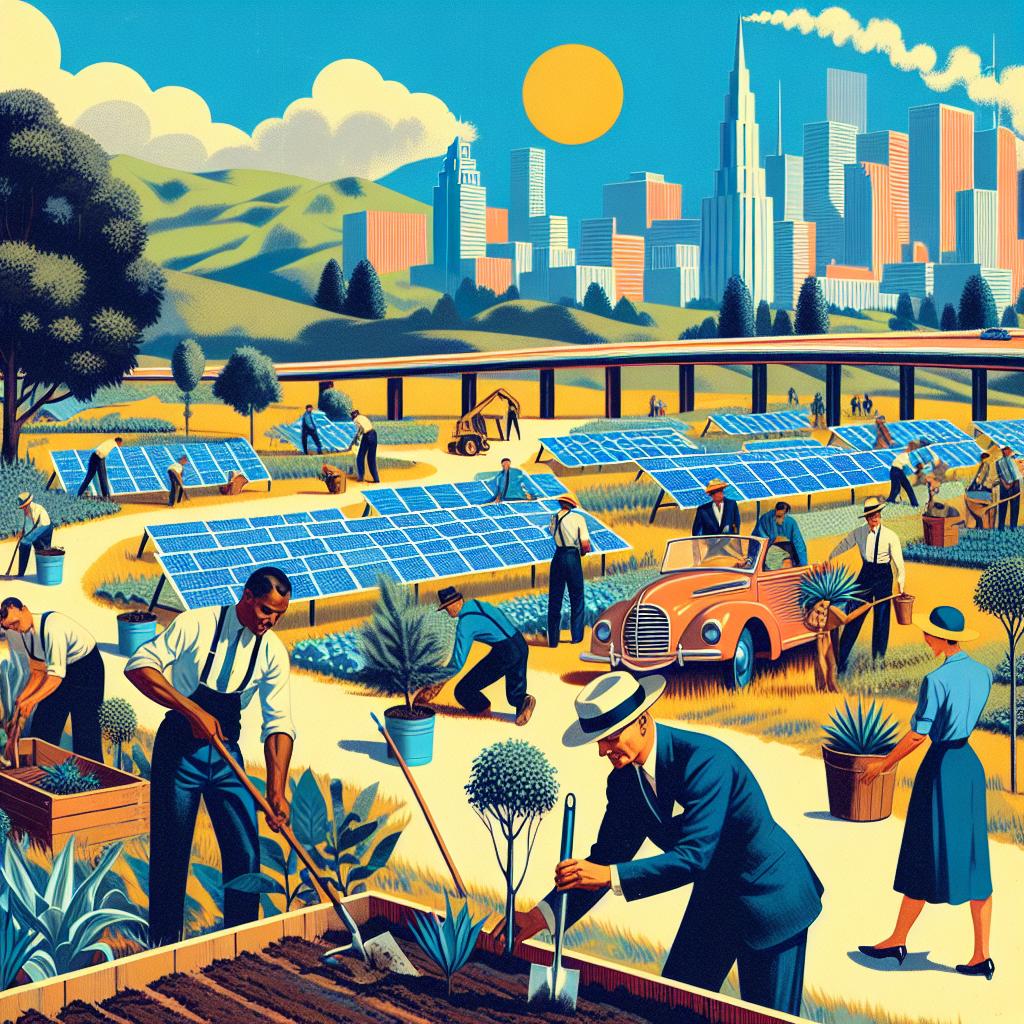Rising State Initiatives in Climate Resilience
In a time when federal action on climate change is hampered by political stalemate and shifting priorities, states across the United States have increasingly taken the helm in climate resilience and clean energy projects. The urgency of climate change calls for bold action, and many governors, state legislatures, and local officials are stepping into leadership roles, crafting innovative approaches to mitigate environmental hazards and transition to sustainable energy.
States like California and New York have long been at the forefront of progressive climate policy, implementing ambitious greenhouse gas reduction mandates that often exceed federal standards. These initiatives set powerful precedents for others: If one state can lead, others can follow. For instance, programs that incentivize renewable energy development, such as solar and wind, illustrate the potential of state-led efforts in driving clean energy innovations.

The Impact of the Inflation Reduction Act
At the national level, the 2022 Inflation Reduction Act allocated an impressive $369 billion for clean energy initiatives. This funding encompasses a broad array of programs, including a stated $7 billion earmarked specifically for hydrogen hubs. The act, a significant mobilization of federal resources toward fighting climate change, also aims to catalyze state-led initiatives. However, the onus remains on states to design and implement tangible projects that leverage this newfound federal support.
By boosting investments in clean technology, states not only create jobs but also catalyze local economies toward sustainable practices. New York’s recent commitment to offshore wind development serves as an inspiring example, promising to generate 50% of the state’s electricity from renewable sources. The continuation of such policies illustrates how norm-setting on clean energy can arise from subnational governance.
Challenges Faced by Local Governments
Local governments are increasingly involved in climate initiatives as they face the stark realities of climate-related disasters. Even with the backing provided by federal legislation, localities often encounter a myriad of obstacles. Factors such as budget limitations, the need for technical expertise, and intergovernmental collaboration can impede progress. Many towns and cities, particularly those with fewer resources, struggle to mobilize for climate resilience in the way that larger, wealthier regions can.
Despite these challenges, localities exhibit remarkable adaptability and creativity. For instance, small cities have developed localized heat action plans, transitioning community spaces into cooler zones during scorching summers. Such grassroots initiatives reveal the potential for integrated climate solutions tailored to specific regional needs, often flourishing in areas where top-down directives fall short.
The Collaborative Path Forward
The convergence of states as innovation hubs for climate resilience presents an opportunity for bi-partisan collaboration. Moving ahead, stakeholder engagement from all sectors, including businesses and non-profits, will be crucial to synchronizing broader climate goals with localized plans. Additionally, as federal action remains restrained, the prospect of building a more resilient infrastructure rests heavily on state leadership and community determination.
In understanding the complexities surrounding clean energy initiatives, one can see that while federal guidance is often a critical component for national standards, states and local governments now hold a more prominent platform. They are not just fulfilling federal mandates; they are crafting a path forward based on informed local needs and aspirations. In navigating these uncharted waters, the combined strength of bottom-up efforts and thoughtful state innovations may very well illuminate a way forward in the fight against climate change.
As the global community faces ever-increasing environmental pressures, the roles of state and local governments are more defining than ever before. Should this local revolution in climate action continue to gather momentum, we may witness not only transformative change in energy practices but also a richer democracy where shared governance paves the way for meaningful progress.
Thus, through bold state initiatives and fortuitous federal legislation like the Inflation Reduction Act, there exists hope that our collective efforts can abate the worst effects of climate change. The road ahead may be fraught with challenges, but innovative solutions often stem from local grassroots movements determined to secure a sustainable future.



